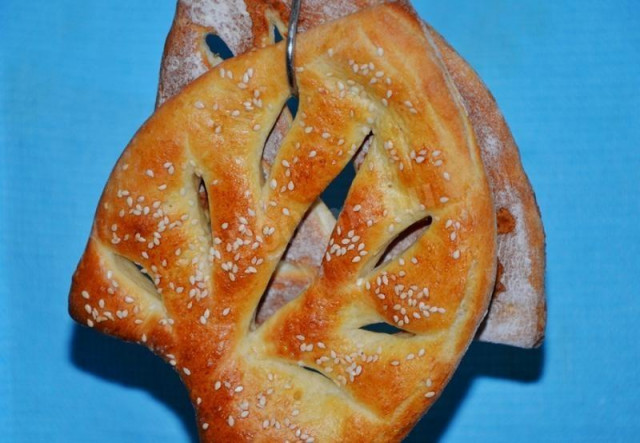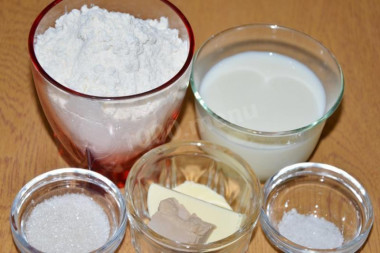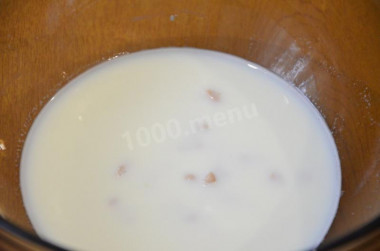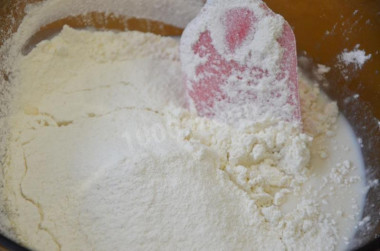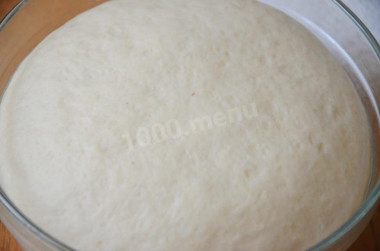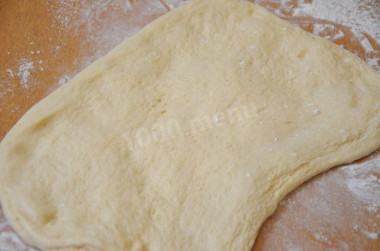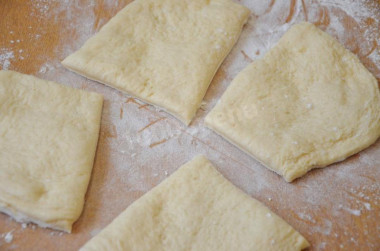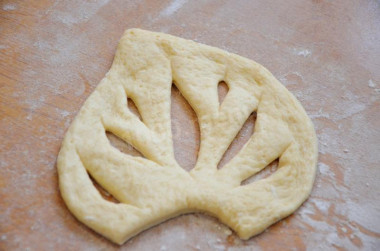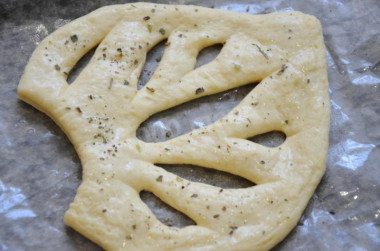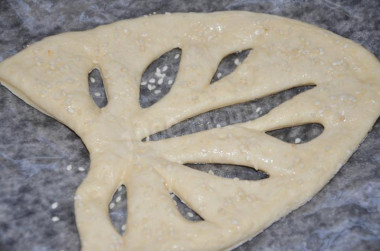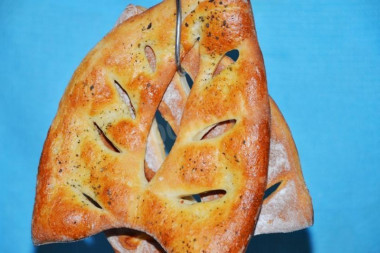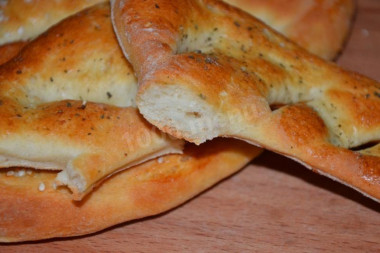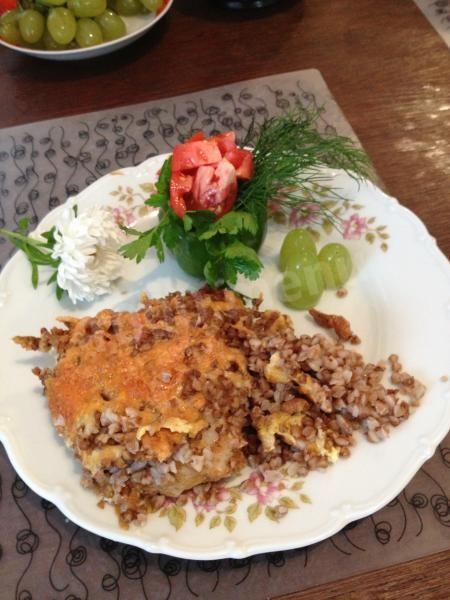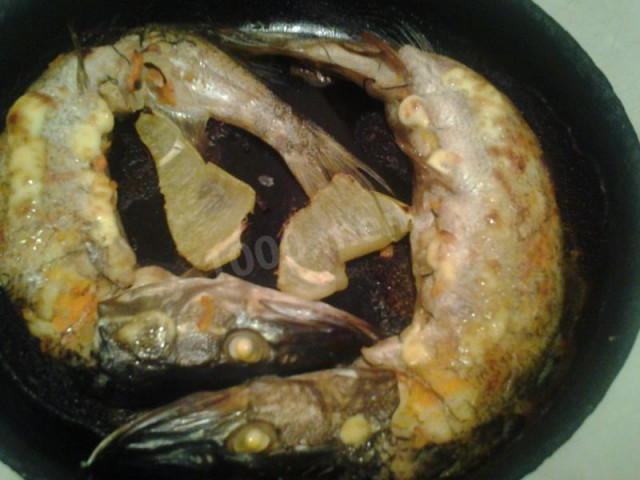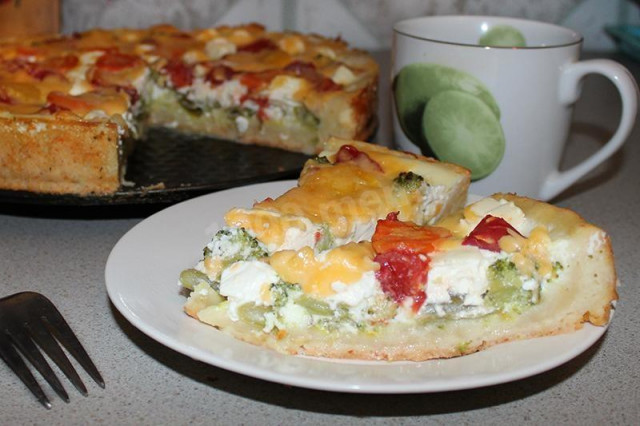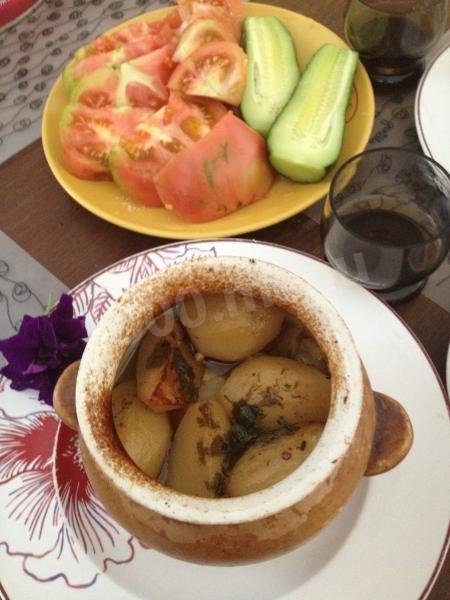Composition / ingredients
Step-by-step cooking
So, let's get started. Knead the dough. In warm milk, we breed yeast with sugar. Add salt and flour, knead the soft dough. During kneading, add butter or vegetable oil and knead the dough thoroughly until a smooth, very soft bun. The dough is sent to a bowl and left in the heat to rise for 40-50 minutes. When the dough came up, it was time to form the fugasses. The dough that has come up is carefully turned over onto a table sprinkled with flour, we do everything gently so that the dough does not lose its airiness.
Now, we need to stretch our dough slightly. We put our hands under the ball of dough and stretch it into a kind of rectangle. We act slowly, so as not to release excess air. Divide the rectangle into 4 parts. We stretch each part a little more and make a through incision with a sharp knife, forming a leaf from the dough. We place our leaflet on a baking sheet and stretch our slots so that they do not stick together during baking. We do this with the whole test.
In the original, the dough does not need to be greased with anything before baking, but if you also want to sprinkle something with herbs, coarse salt or sesame, then we lubricate it with either protein or milk or vegetable oil (I prefer protein, then nothing crumbles after baking). Also, before baking, it is not necessary to give the fugasses time to proofing, but if the dough has lost its airiness during molding, let them stand for 15 minutes. Bake in a preheated oven at 220 C for about 12 minutes (until golden brown). Let it cool down a little and serve it to the table. Enjoy your meal!
Caloric content of the products possible in the composition of the dish
- Whole cow's milk - 68 kcal/100g
- Milk 3.5% fat content - 64 kcal/100g
- Milk 3.2% fat content - 60 kcal/100g
- Milk 1.5% fat content - 47 kcal/100g
- Concentrated milk 7.5% fat content - 140 kcal/100g
- Milk 2.5% fat content - 54 kcal/100g
- Pressed yeast - 109 kcal/100g
- Granulated sugar - 398 kcal/100g
- Sugar - 398 kcal/100g
- Butter 82% - 734 kcal/100g
- Amateur unsalted butter - 709 kcal/100g
- Unsalted peasant butter - 661 kcal/100g
- Peasant salted butter - 652 kcal/100g
- Melted butter - 869 kcal/100g
- Dried whole sesame seeds - 563 kcal/100g
- Shelled sesame seed - 582 kcal/100g
- Spices dry - 240 kcal/100g
- Wheat flour - 325 kcal/100g
- Table salt - 0 kcal/100g

